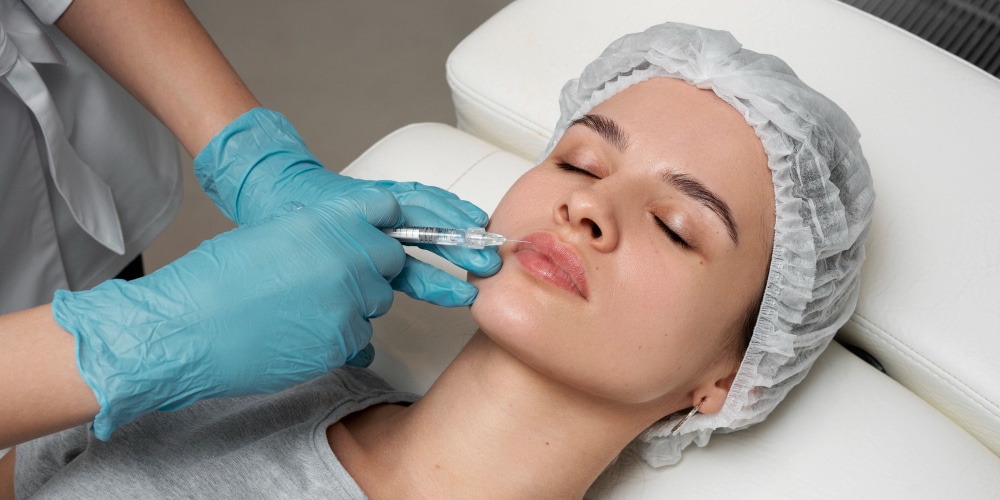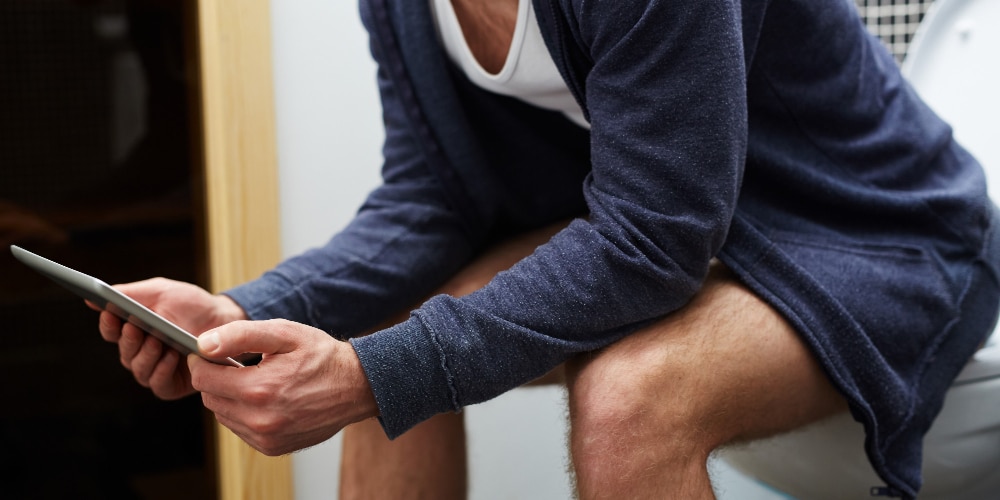Latest
FACT CHECK: Are silicone-based lip implants safe?
Experts advise the use of dissolvable hyaluronic acid fillers, which are generally safer, reversible, and allow for precise shaping with fewer complications, and should always be administered under medical supervision
Author
Author
- admin / 14 hours

- 0
- 9 min read

Author
CLAIM:
Permanent silicone-based lip implants can cause multiple side effects, making hyaluronic acid fillers a safer alternative for lip enhancement.
FACT:
Silicone-based lip implants can shift, cause swelling, infection, scar tissue, or nerve irritation, and may require corrective surgery. Experts advise the use of dissolvable hyaluronic acid fillers, which are generally safer, reversible, and allow for precise shaping with fewer complications, and should always be administered under medical supervision.
If you’ve come across disturbing videos on social media showing long, rubbery material being pulled out of someone’s lips, you may be wondering what it really is. A viral reel by dermatologist Dr Narendra Nikumbh, who has over 220K followers on Instagram, has brought renewed attention to the risks associated with silicone-based lip implants.
According to his LinkedIn profile, Dr Nikumbh is the “Founder and Director of Infinity Aesthetics Clinic”, and describes himself as “a dedicated dermatologist with experience in clinical, aesthetic, and cosmetic dermatology,” with a special interest in trichology and hair transplant procedures.
In the reel, Dr Nikumbh comments on a video where a long, strip-like material is removed from a woman’s lips. He clarifies that the substance being removed is not an infection or a worm. It is a permanent silicone-based lip implant, which can cause multiple side effects. For fuller lips, he recommends safe and dissolvable hyaluronic acid fillers instead.
What is lip implant surgery?
Lip implant surgery is a cosmetic procedure in which synthetic implants are inserted into the lips to create a fuller and more defined appearance. Unlike temporary lip fillers, which dissolve over time, lip implants are designed to provide long-lasting or permanent volume. The goal is to enhance lip shape and contour in a way that remains stable for years.

During the procedure, surgeons typically use local anaesthesia, sometimes paired with light sedation to increase comfort. Small incisions are made at the corners of the mouth, through which the surgeon creates a tunnel inside the lip tissue. A soft, flexible implant—usually made of silicone or expanded polytetrafluoroethylene (ePTFE)—is then inserted into this space. Once positioned, the incisions are closed using dissolvable sutures. The entire surgical process generally takes 30 to 60 minutes, and patients can return home the same day.
What are the types of lip implants?
Lip implants are available in a few main forms, each with different characteristics. The most common are silicone implants, which are smooth, pre-shaped, and permanent yet removable if the patient wishes.
Another widely used option is the PermaLip implant, a proprietary solid silicone device engineered to feel natural and resist shifting within the lips. Some surgeons also use ePTFE implants, often known by the brand Gore-Tex; this porous material allows tissue to grow into the implant, offering greater stability over time.
Why is silicone used in lip implants?
Solid silicone is widely used in facial implants because it is stable, does not degrade over time, and can be removed or replaced if needed. A review published in the International Open Access Journal of the American Society of Plastic Surgeons notes that solid silicone implants like PermaLip maintain their form, are generally well-tolerated, and offer predictable long-term results.
Since the material does not integrate with the surrounding tissue, revision surgeries are usually straightforward. Importantly, this solid silicone is not the same as injectable silicone oil, which is unsafe and not approved for cosmetic use.
What are PermaLip implants made of?
PermaLip implants are constructed from soft, solid silicone elastomer—a flexible, biocompatible material specially designed for long-term placement in the lips. Because the implant is solid rather than liquid, it cannot leak, rupture, or spread to other tissues. It has a smooth surface to minimise irritation and tapered ends that help it blend with the natural shape of the lips. PermaLip implants are produced in multiple sizes so surgeons can tailor the final look to each patient’s anatomy and desired outcome.
Despite frequent claims on clinic websites, PermaLip implants are not approved by the U.S. Food and Drug Administration (FDA) for lip augmentation. In April 2019, the FDA issued a warning letter to SurgiSil, the manufacturer, clarifying that the PermaLip implant lacks FDA clearance for use in the lips. The FDA only recognises SurgiSil’s silicone implants for augmentation of the chin, nose, and cheeks—not the lips.
Therefore, any promotional material describing PermaLip as FDA-approved for lip enhancement is inaccurate.
How do lip implants differ from lip fillers?
Although both procedures aim to enhance lip volume, lip implants and lip fillers differ significantly in materials, technique, and longevity. Lip implants involve a surgical procedure to insert a solid silicone or ePTFE device, offering permanent results but with a fixed shape that cannot be adjusted without additional surgery.
Fillers, on the other hand, use hyaluronic acid—a gel-like substance naturally found in the body—and can be injected in a non-surgical session that takes only minutes. They last between 6 to 18 months and can be dissolved quickly with an enzyme called hyaluronidase.
Unlike implants, hyaluronic acid fillers are FDA-approved for lip enhancement, making them a widely preferred option for patients seeking flexibility, reversibility, and shorter recovery time.
Are there any side effects of silicone-based lip implants?
Like any surgical procedure, they carry some risks. Common immediate side effects may include minor bleeding, infection, or an allergic reaction to either the anaesthetic (typically lidocaine) or the implant material itself.
Another review emphasises that patients should be aware of the potential complications of lip implants. Among the most common is malposition, which occurs in 7 to 10 per cent of cases and is often linked to uneven tunnelling in the submucosal plane or asymmetrical placement. Extrusion is less frequent, reported in less than 1 per cent of patients, and “may occur if severe asymmetry and wound breakdown occur.” The review notes that this risk can be minimised by using the correct implant size, maintaining proper dissection planes, creating a small submucosal pocket, and using careful suture techniques. Patients are also advised to avoid heavy manipulation of the implanted area, such as talking, chewing, or massaging, for the first several days after surgery.
Other potential side effects include the need for revision or size adjustment, which occurs in 1 to 10 per cent of cases, and capsular contracture, reported in about 1 per cent, particularly with expanded polytetrafluoroethylene (ePTFE) implants. The review explains that ePTFE implants “have been shown to shrink and contract with time, leading to an irregular and often asymmetric contour,” which has contributed to their declining use. Infection is rare, occurring in less than 1 per cent, but may require implant removal if severe. Additional complications include dissatisfaction (1 per cent), dissatisfaction requiring removal (4 per cent), and prolonged edema or ecchymosis, which typically resolves within one to two weeks.
According to Dr Shareefa Chause, a dermatologist based in Mumbai, many women in modelling or acting choose silicone-based lip implants to achieve fuller lips. She explains that permanent silicone implants can have several side effects and “may shift from their original position over time, resulting in uneven or unnatural-looking lips. Patients may also experience chronic swelling, infection, or scar tissue formation around the implant.”
Dr Chause notes that there is a risk of nerve irritation or long-term stiffness, which can affect lip movement. In some cases, she adds, “removal becomes difficult and may require corrective surgery, leaving changes in lip shape.”
Are dissolvable hyaluronic acid fillers safe and better for lip enhancement?
Hyaluronic acid (HA) fillers have become one of the most popular non-surgical options for lip augmentation. According to Harvard Medical School, “Dermal fillers can be composed of a variety of substances, some naturally occurring and some synthetic. One of the most common compounds used in dermal fillers is hyaluronic acid (HA). HA is a naturally occurring substance found in our skin, and it plays a major role in keeping skin hydrated and volumised.”
A 2017 study conducted on 10 healthy women aged 28–45 evaluated the safety and efficacy of a soft tissue HA filler, Hyamax Kiss, for upper lip augmentation. The study found that “soft tissue HA filler tested in this study was well tolerated, efficient and durable when used for upper lip augmentation.”
Patients received a single injection, and follow-ups at 2, 12, and 24 weeks measured lip fullness using the Medicis Lip Fullness Scale and Investigator’s Global Assessment (IGA). Response rates were high, with 80% of participants showing improvement at 2 weeks, 70% at 12 weeks, and 80% at 24 weeks. Adverse effects were temporary and mostly mild, and nearly all participants reported satisfaction with their lip appearance.
Further supporting these findings, a 2021 meta-analysis reviewed 32 studies, including randomised controlled trials, cohort studies, and case reports, to evaluate HA effectiveness and safety in lip augmentation.
The analysis found that 91 per cent of subjects experienced increased lip fullness two months after injection, with the effect decreasing to 74 per cent at six months and 46 per cent at one year. Most treatment-related adverse effects were mild or moderate, such as tenderness (88.8%), swelling at the injection site (74.3%), and bruising (39.5%). Rare but serious effects included foreign body granulomas (0.6%), herpes labialis (0.6%), and angioedema (0.3%).
The authors concluded, “Our meta-analysis revealed that lip augmentation with injectable HA is an efficient method for increasing lip fullness for at least up to 6 months after augmentation. Moreover, we found that most AEs of HA treatment were mild or moderate, but a small number of serious adverse effects were also found. In conclusion, further well-designed RCTs are still needed to make the presently available evidence stronger.”
In line with these findings, Dr Chause emphasises that dissolvable hyaluronic acid fillers are generally safer for lip enhancement. She explains that these fillers “blend naturally with the lip tissue, give smooth and flexible results, and can be reversed if needed.” Compared to permanent implants, the risk of complications is much lower, and they also allow for precise shaping, making them a more adjustable option for most people.
“It is a good idea to discuss with the doctor and then only opt for any procedure,” Dr Chause advises. “Don’t just blindly follow any trend promoted on social media and make informed choices with the help of an expert.”
Also read: Contact lens complications: What you need to know to protect your vision
(Do you have a health-related claim that you would like us to fact-check? Send it to us, and we will fact-check it for you! You can send it on WhatsApp at +91-9311223141, mail us at hello@firstcheck.in, or click here to submit it online)










